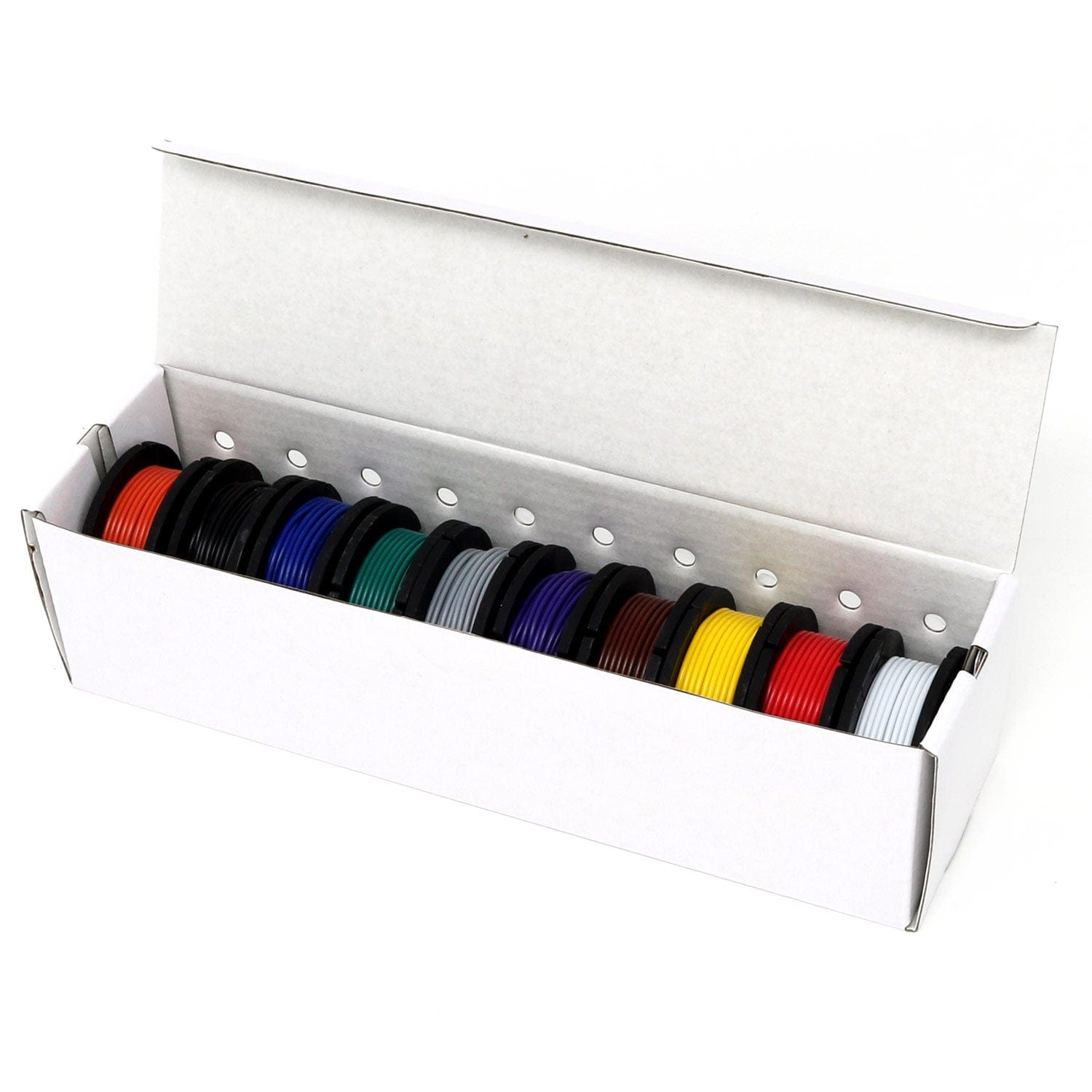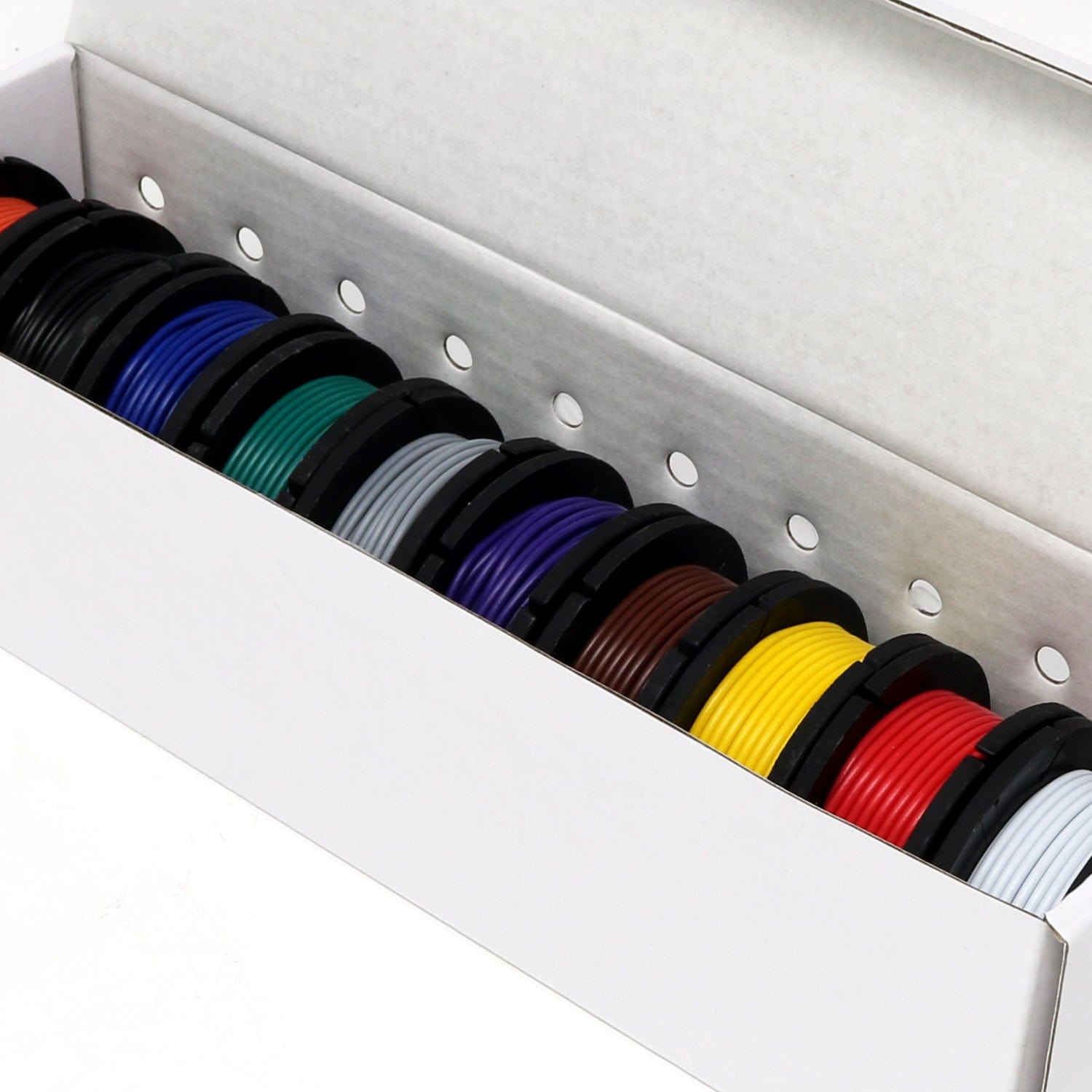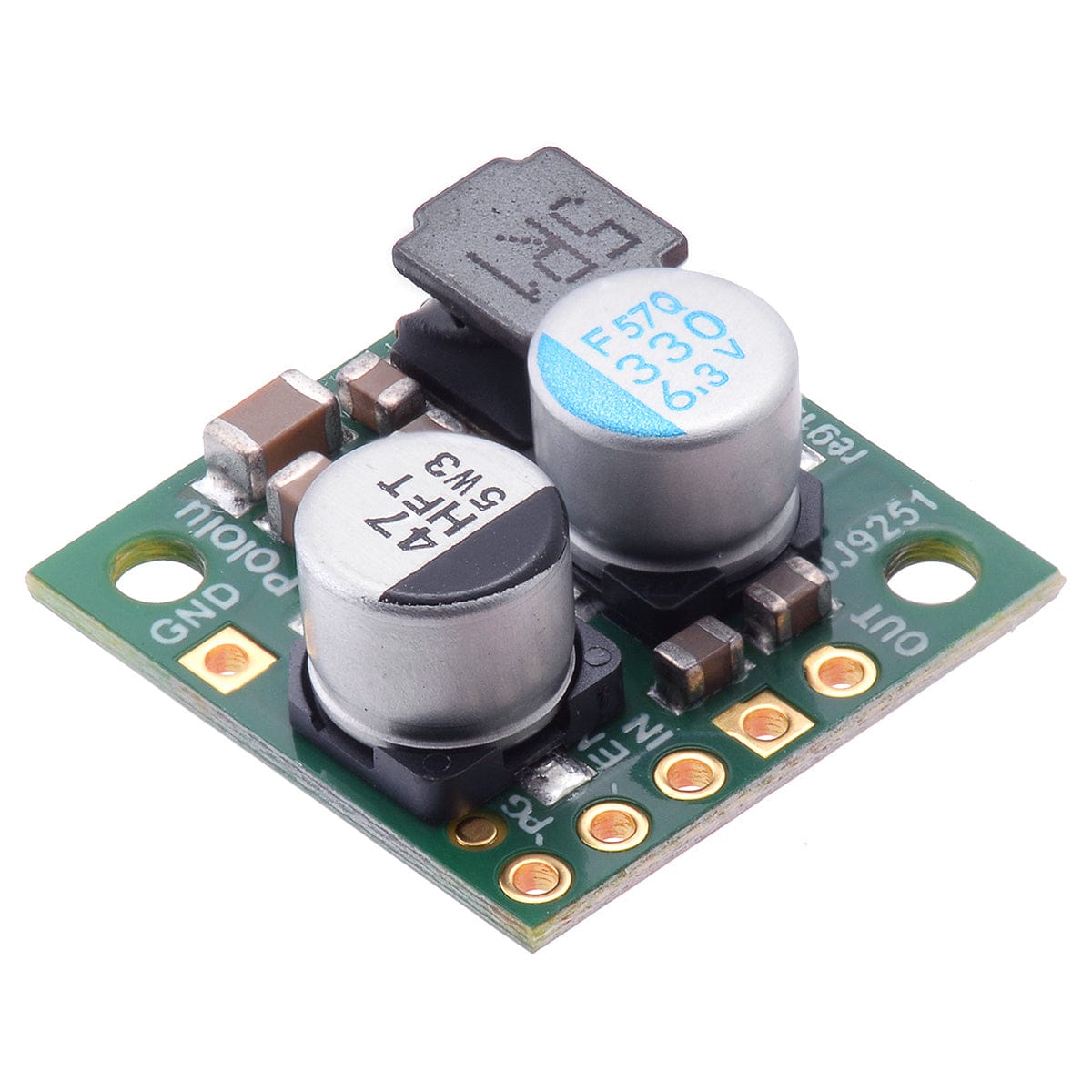
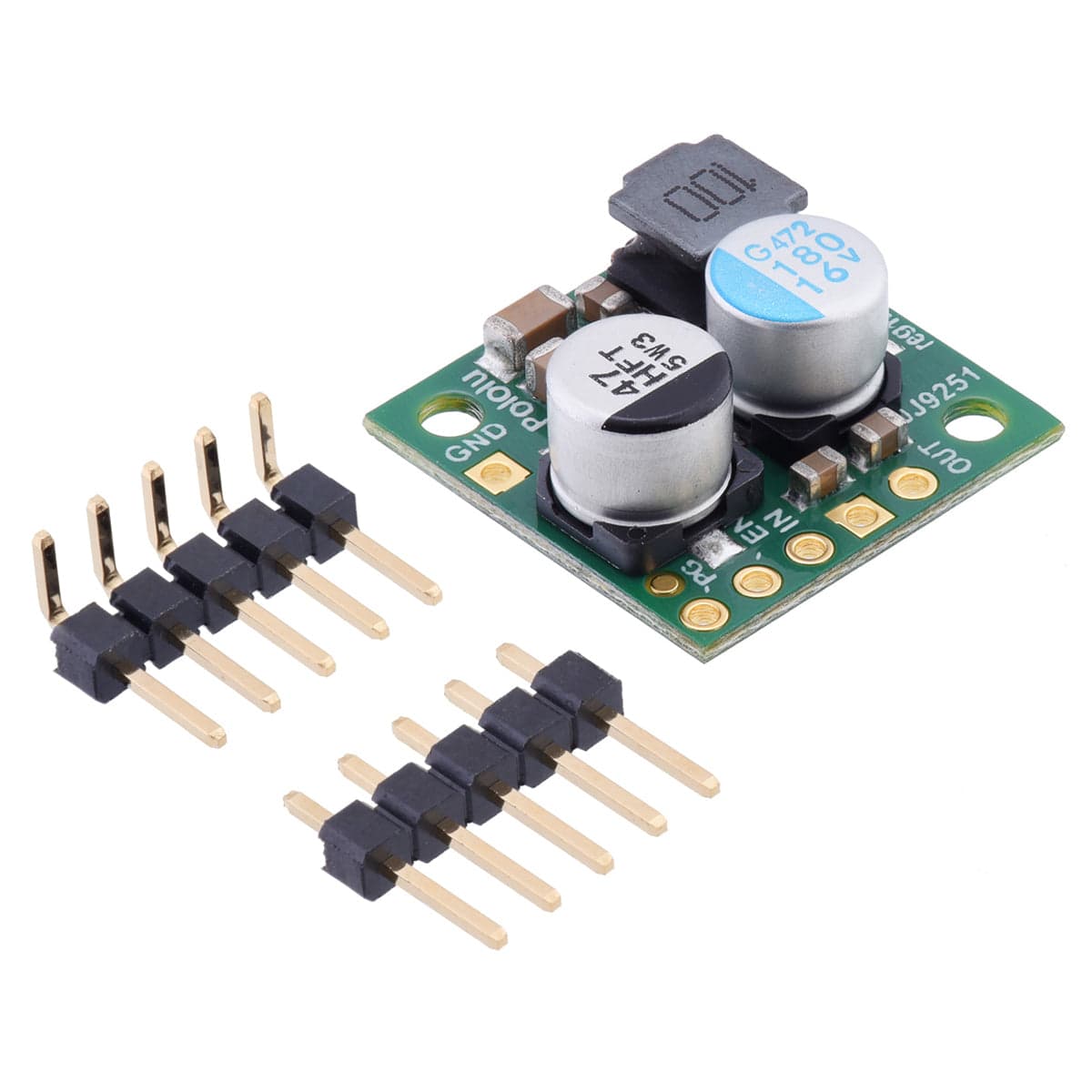
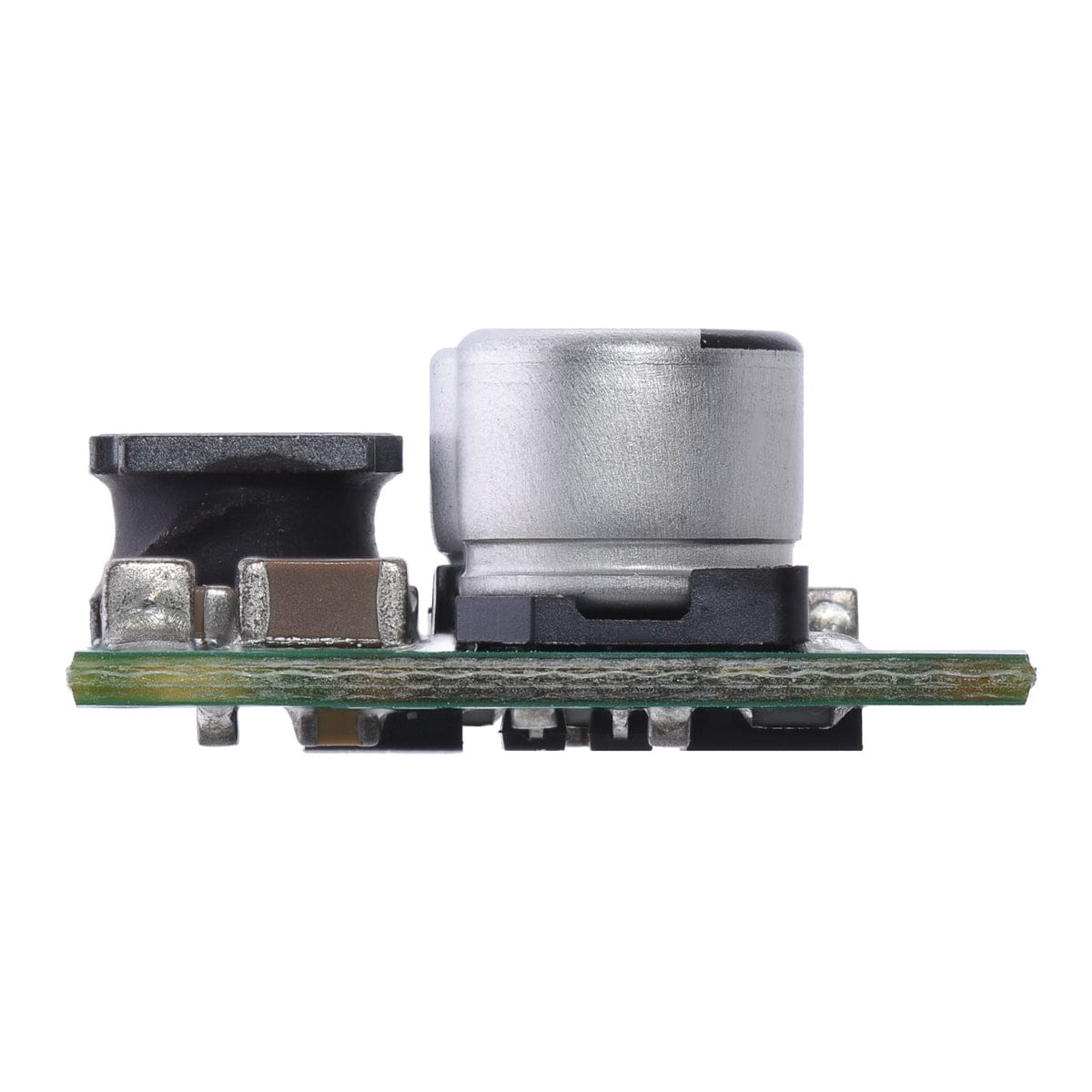
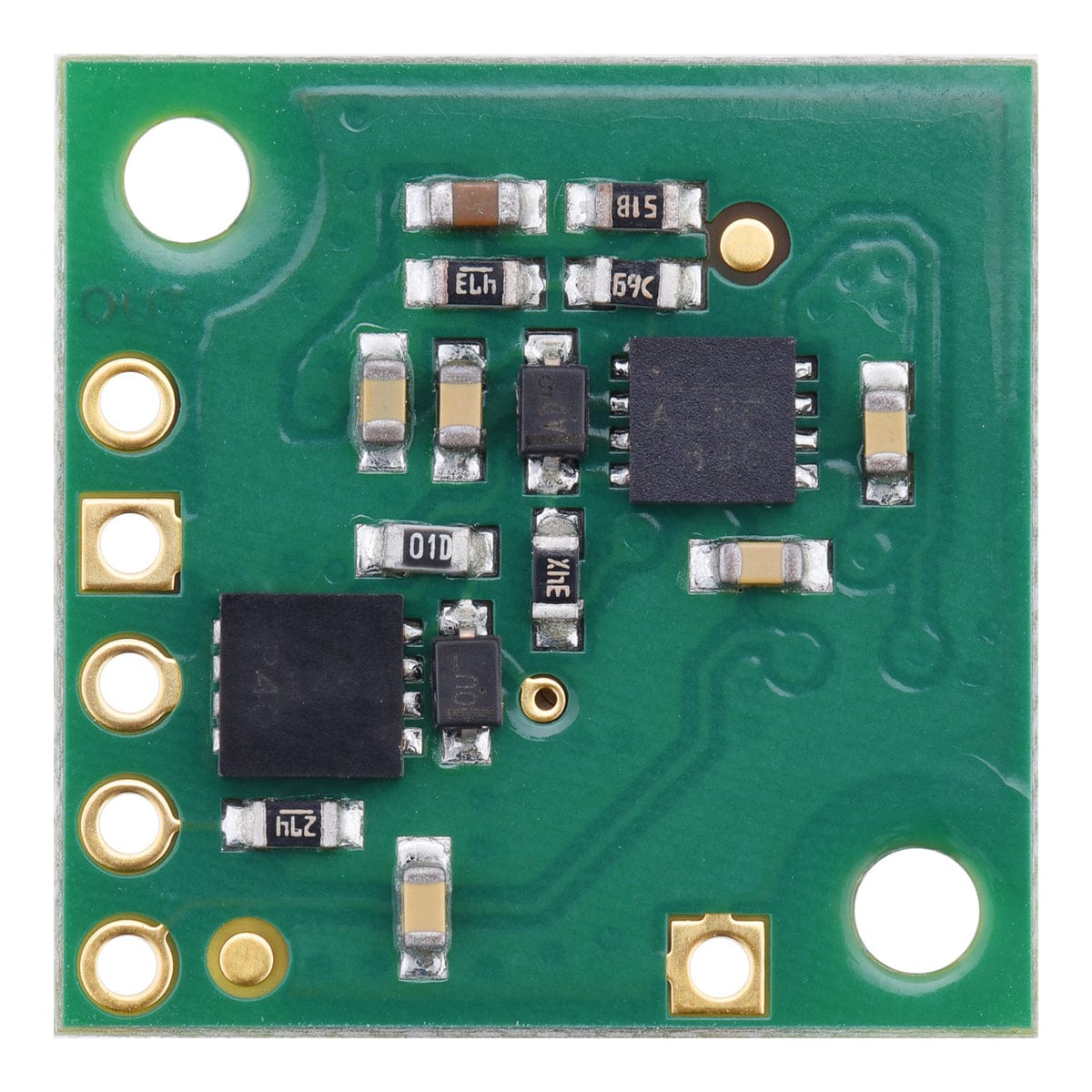
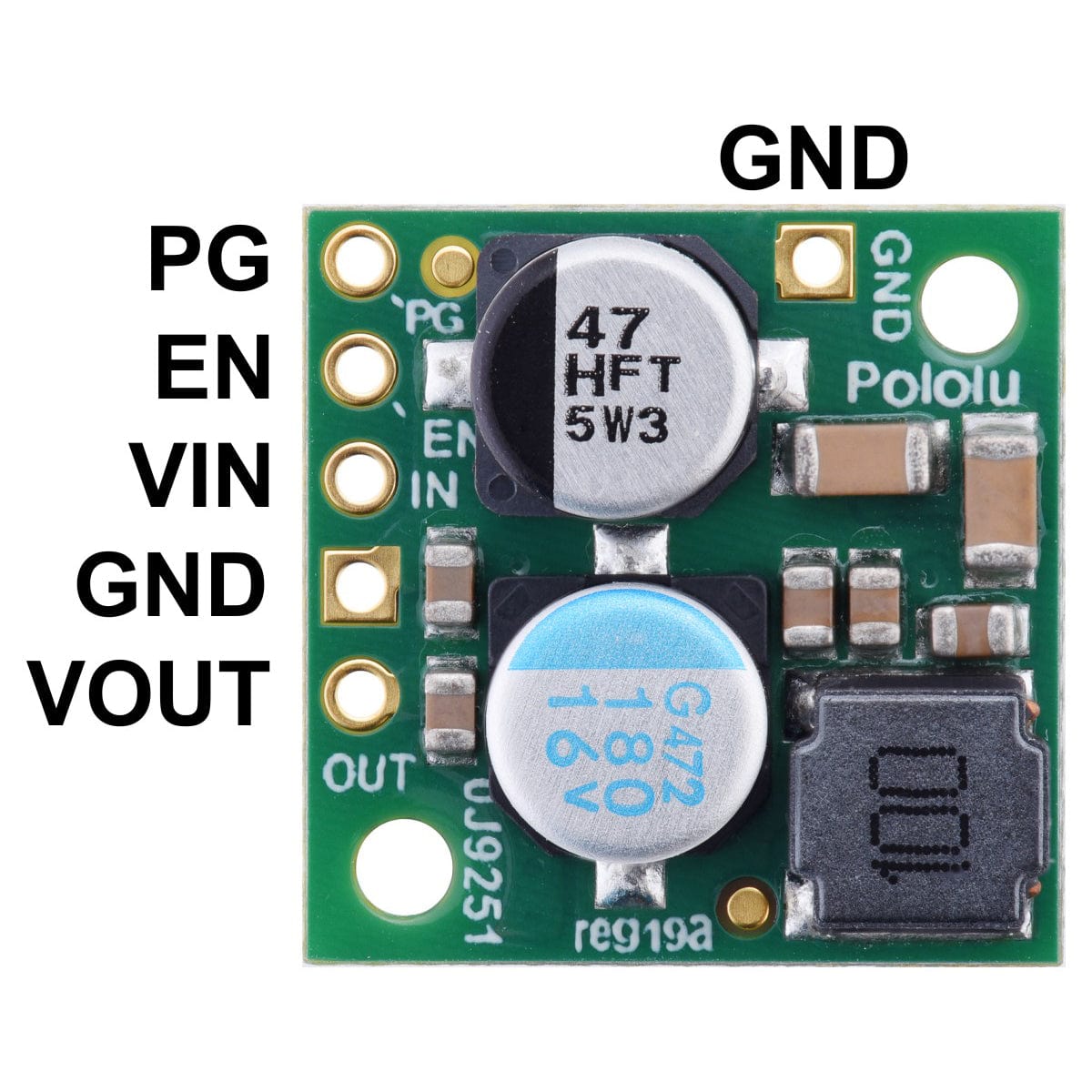
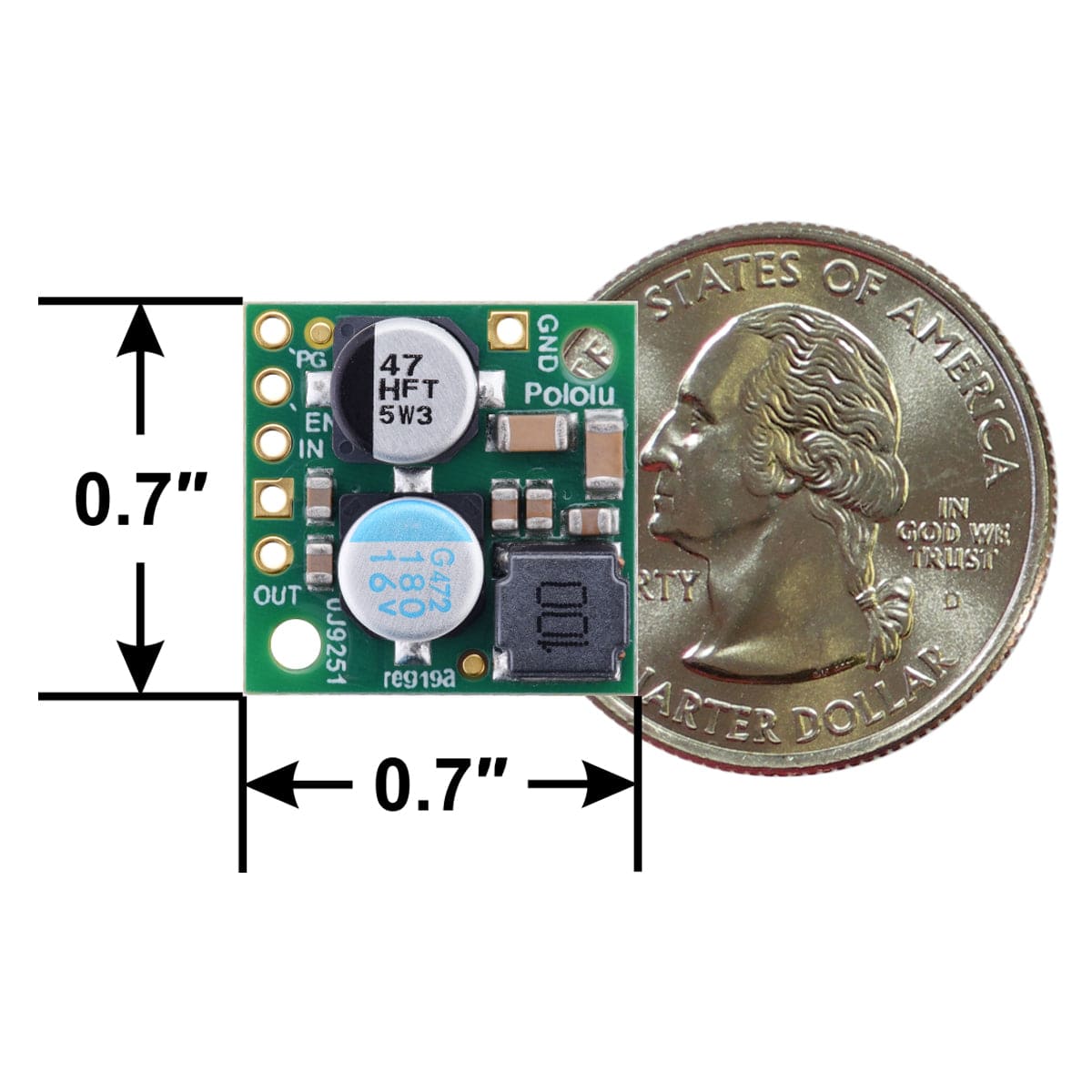
Login / Signup
Cart
Your cart is empty
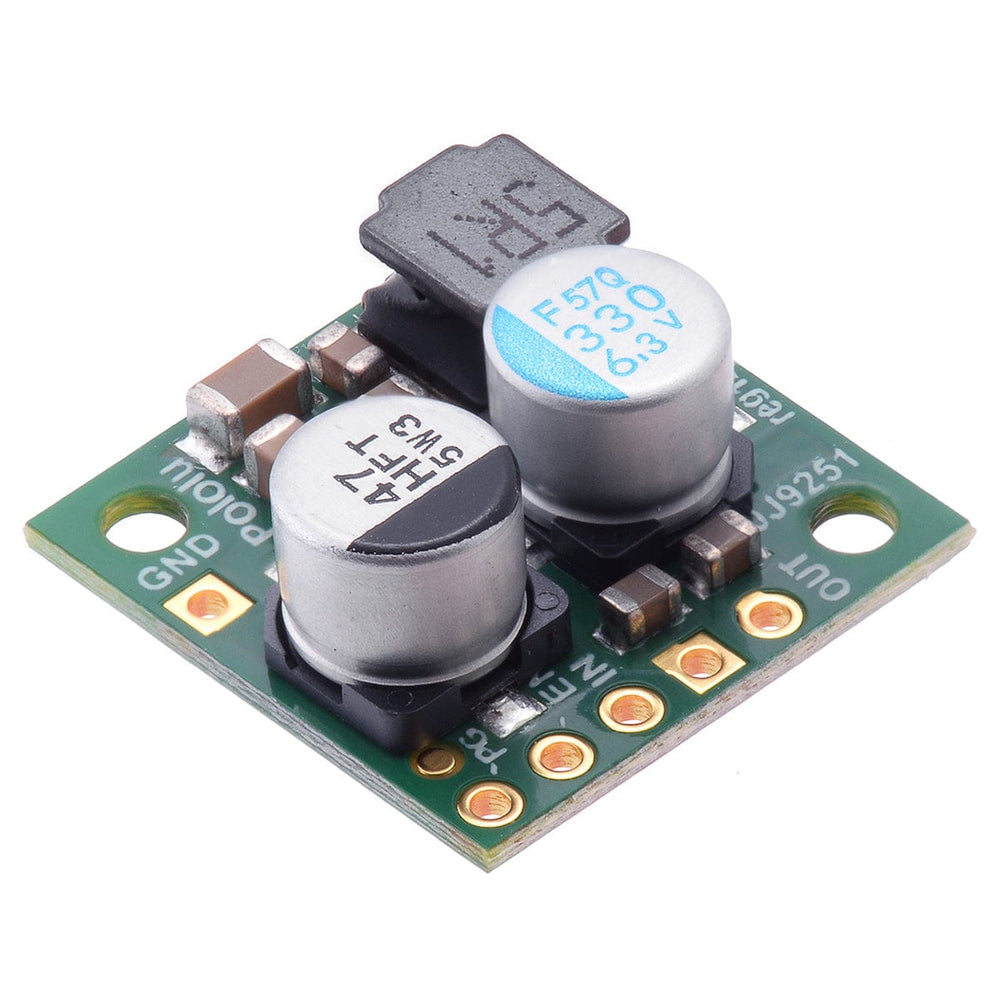
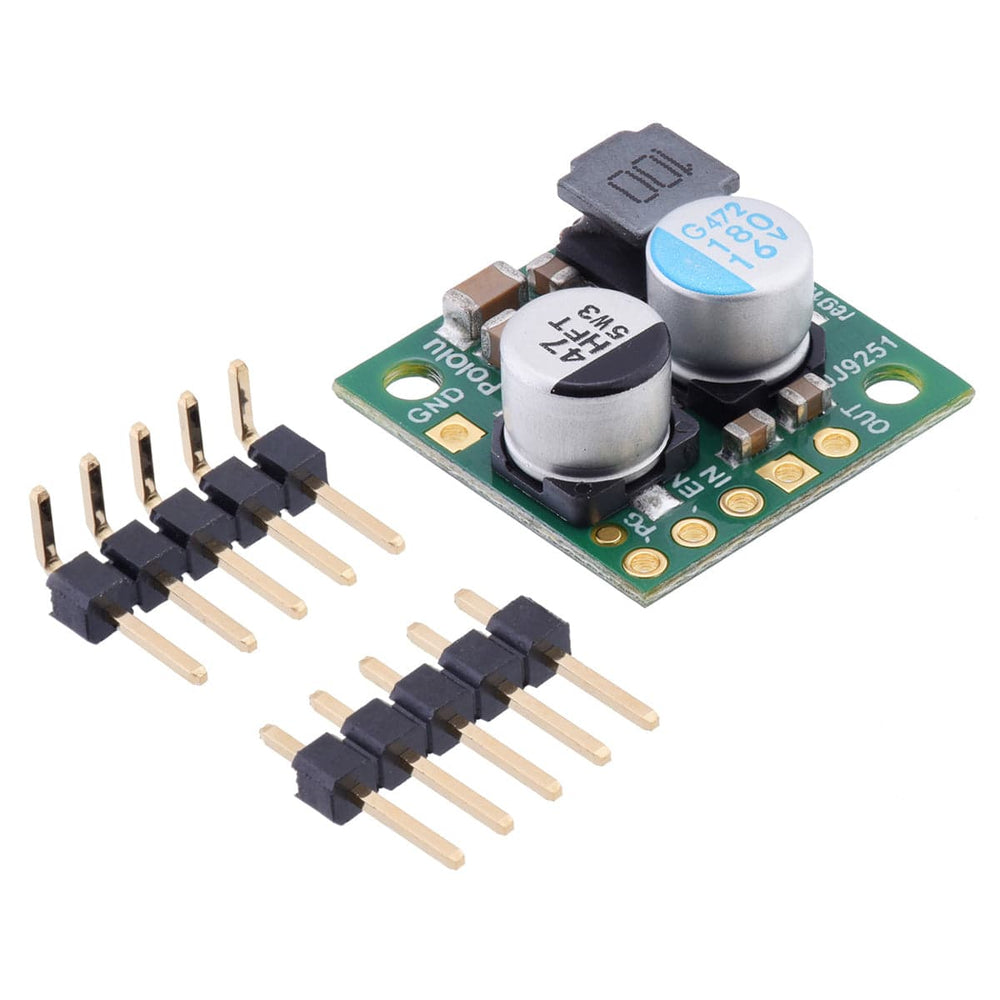
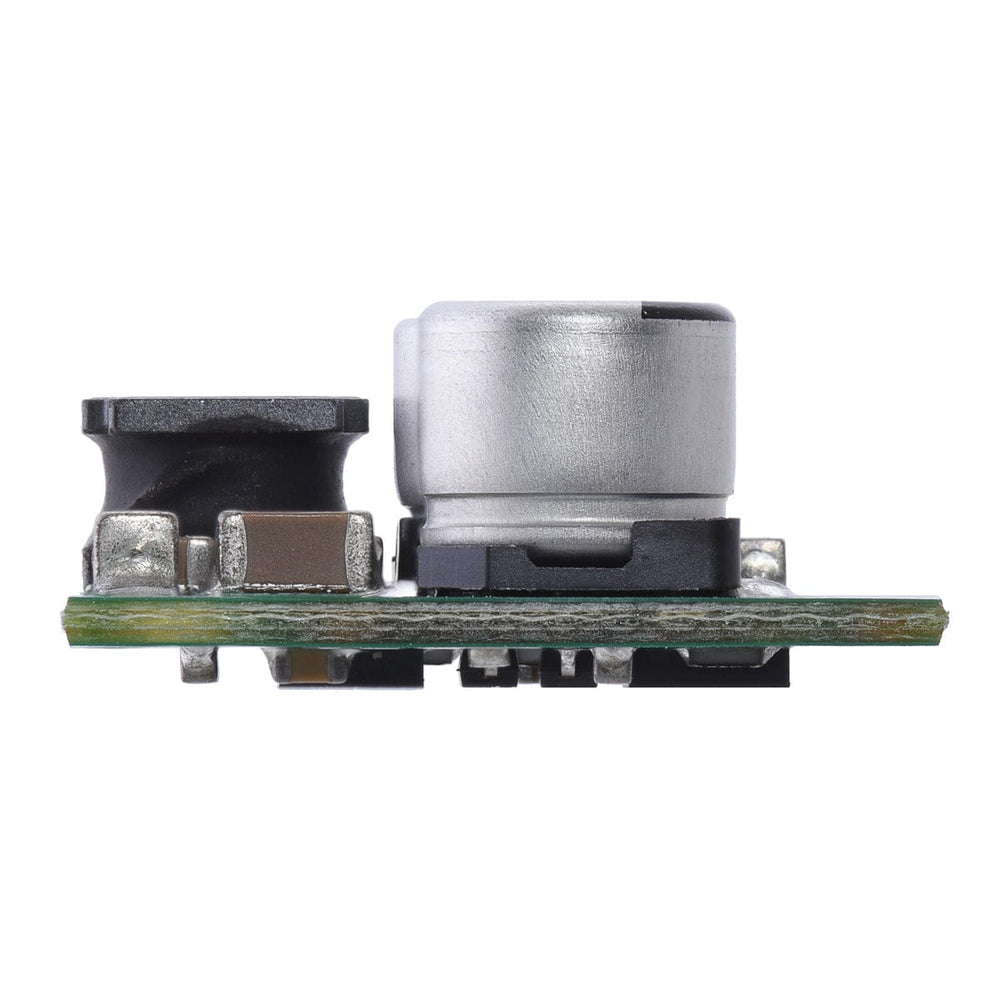
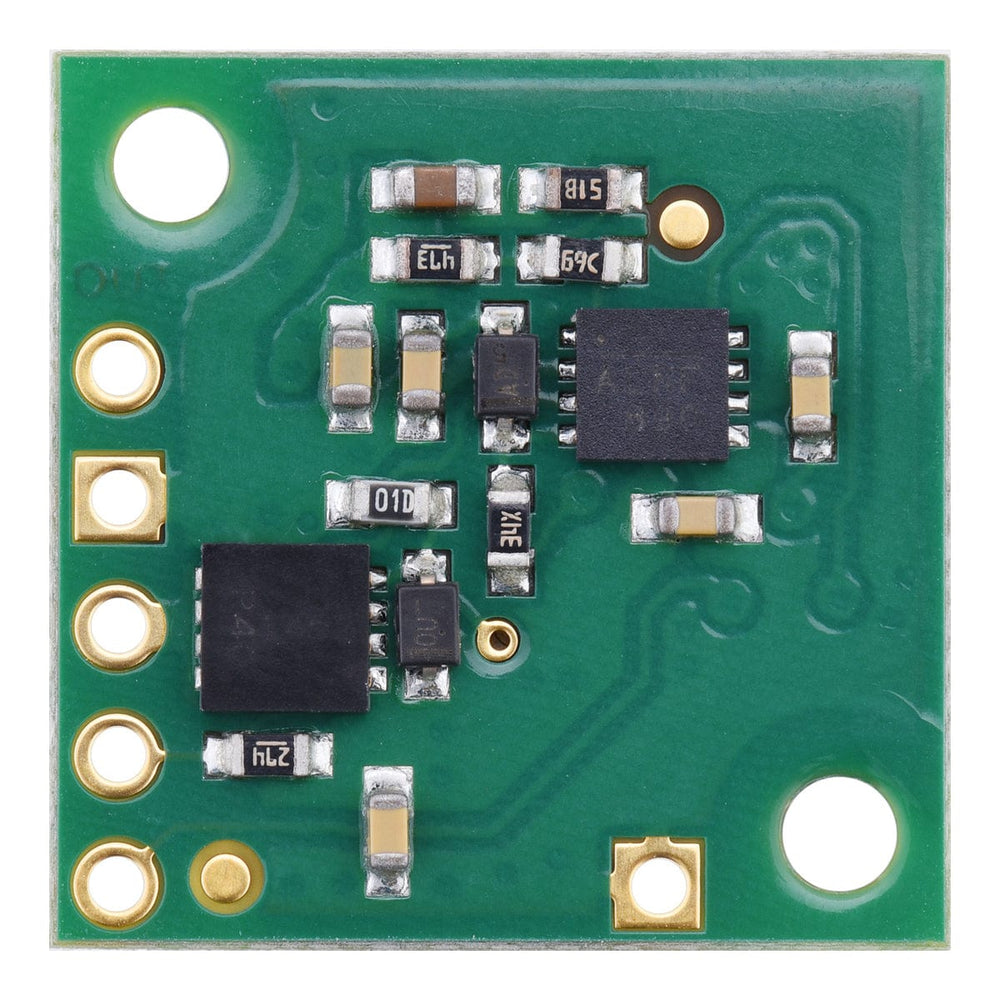
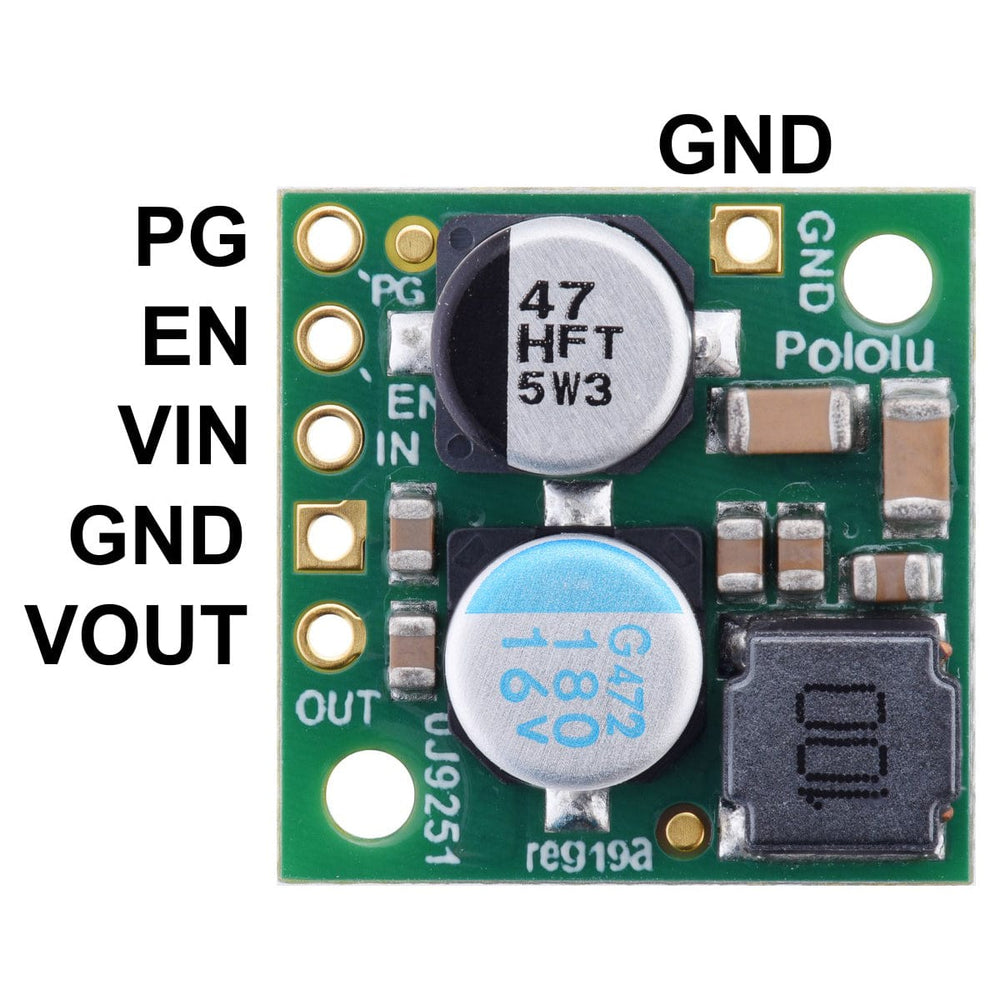

This small synchronous switching step-down (or buck) regulator from Pololu takes an input voltage of up to 36V and efficiently reduces it to 5V.
The board measures only 0.7″ × 0.7″ yet delivers typical continuous output currents between 1.9A and 2.5A, depending on the input voltage, which makes this regulator well-suited for powering moderate loads like sensors or small motors.
An optional enable input can be used to put the regulator in a low-power state with a current draw of 5µA to 10µA per volt on VIN. The regulator also features reverse voltage protection and a power-good output indicates when the regulator cannot adequately maintain the output voltage.
The modules have built-in reverse-voltage protection, short-circuit protection, a thermal shutdown feature that helps prevent damage from overheating, and a soft-start feature that reduces inrush current.
Warning! During normal operation, this product can get hot enough to burn you. Take care when handling this product or other components connected to it.
These buck regulators have five main connection points for five different electrical nodes: power good (PG), enable (EN), input voltage (VIN), ground (GND), and output voltage (VOUT). The board also features a second ground connection point off the main row of connections that might be convenient for applications where you are soldering wires directly to the board rather than using it in a breadboard.

The input voltage, VIN, powers the regulator. Voltages between 4V and 36V can be applied to VIN, but for versions of the regulator that have an output voltage higher than 4V, the effective lower limit of VIN is VOUT plus the regulator’s dropout voltage, which varies approximately linearly with the load (see below for a graph of dropout voltages as a function of the load).
The output voltage, VOUT, is fixed and depends on the regulator version: this D24V22F5 version outputs 5V.
The regulator is enabled by default: a 270 kΩ pull-up resistor on the board connects the EN pin to the reverse-protected VIN. The EN pin can be driven low (under 1V) to put the board into a low-power state. The quiescent current draw in this sleep mode is dominated by the current in the pull-up resistor from EN to VIN and by the reverse-voltage protection circuit, which altogether will draw between 5µA and 10µA per volt on VIN when EN is held low. If you do not need this feature, you should leave the EN pin disconnected.
The “power good” indicator, PG, is an open-drain output that goes low when the regulator’s output voltage falls below around 85% of the nominal voltage and becomes high-impedance when the output voltage rises above around 90%. An external pull-up resistor is required to use this pin.
The efficiency of a voltage regulator, defined as (Power out)/(Power in), is an important measure of its performance, especially when battery life or heat are concerns. This family of switching regulators typically has an efficiency of 85% to 95%, though the actual efficiency in a given system depends on input voltage, output voltage, and output current. See the efficiency graph below for more information.

The dropout voltage of a step-down regulator is the minimum amount by which the input voltage must exceed the regulator’s target output voltage in order to ensure the target output can be achieved. For example, if a 5 V regulator has a 1 V dropout voltage, the input must be at least 6 V to ensure the output is the full 5 V. Generally speaking, the dropout voltage increases as the output current increases. The graph below shows the dropout voltage at different output currents for the D24V22F5.

The maximum achievable output current of these regulators varies with the input voltage but also depends on other factors, including the ambient temperature, air flow, and heat sinking. The graph below shows maximum output currents that these regulators can deliver continuously at room temperature in still air and without additional heat sinking.
WARNING: During normal operation, this product can get hot enough to burn you. Take care when handling this product or other components connected to it.

The quiescent current is the current the regulator uses just to power itself, and the graph below shows this for the different regulator versions as a function of the input voltage. The module’s EN input can be driven low to put the board into a low-power state where it typically draws between 5 µA and 10 µA per volt on VIN.









